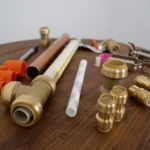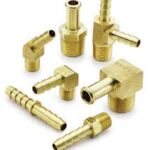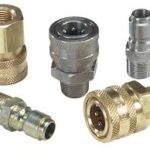When it comes to piping and plumbing projects, having the right pipe fittings is crucial for ensuring a successful and efficient system. Among the many types of pipe fittings available, one that stands out for its versatility and functionality is the Bullhead Tee. Understanding the benefits and applications of the Bullhead Tee can elevate your plumbing and piping projects to a whole new level.
What is a Bullhead Tee?
A Bullhead Tee is a type of pipe fitting that features three openings arranged in a T-shaped configuration. One of the openings is located at the center of the T, while the other two are positioned at the ends of the horizontal bar. The specialty of Bullhead Tee is that its branch connection is of a larger diameter than the run pipe. The shape of this fitting resembles a bull’s head, which explains its unique name.
The Bullhead Tee fitting facilitates fluid flow by directing it into the Tee through the “branch” pipe while splitting the outlet between the two “run” connections. This ingenious design allows for the smooth supply of flow to smaller-diameter piping in two opposing directions, eliminating the necessity for reducers.
Materials and Durability
Bullhead Tees are commonly made from a variety of durable materials, including copper, brass, stainless steel, cast iron, aluminum, nickel, malleable iron, rubber, ceramic, and various types of plastics like PVC (Polyvinyl Chloride) and CPVC (Chlorinated Polyvinyl Chloride). The choice of material depends on the specific plumbing application and the environment in which the fitting will be used. Regardless of the material, Bullhead Tees are designed to withstand low-pressure and temperature conditions, making them ideal for both residential and commercial plumbing systems. Refer to Fig. 1 which shows typical examples of bullhead tee fitting.

Versatility in Applications
One of the main reasons for the popularity of Bullhead Tees is their versatility in plumbing applications. They are used to connect three pipes at a T-shaped intersection, allowing for smooth flow direction changes. Here are some common applications where Bullhead Tees shine:
- Branch Connections: When you need to add a branch line to an existing pipe, a Bullhead Tee is the fitting of choice. This is often the case in water supply systems, where additional fixtures, such as sinks or toilets, need to be connected to the main water line.
- Manifolds: Bullhead Tees are essential components of plumbing manifolds. Manifolds are distribution points that evenly split the flow of water to multiple lines. They are used in radiant heating systems and other applications where consistent water distribution is required.
- Diverting Flow: In some cases, you may need to divert the flow of water from one pipe to another. Bullhead Tees enable smooth flow diversion without causing significant pressure drops, ensuring optimal performance of the entire plumbing system.
- Venting Lines: Plumbing systems require proper ventilation to prevent pressure buildup and ensure efficient water flow. Bullhead Tees can be used to connect venting lines, allowing air to escape from the system and preventing potential issues like water hammers.
Bullhead Tees find applications in the following piping Projects:
- Fire Protection System
- Irrigation System
- Low-Pressure Heating Systems
- Distribution of Low-Pressure Fluids
- Air Conditioning System
Reducing Tee vs Bullhead Tee
The main differences between reducing tee and bullhead tee connections are given below:
| Feature | Reducing Tee | Bullhead Tee |
| Flow Direction | The flow moves into the main run and is reduced to a smaller diameter branch pipe | The flow moves into the Tee via the “branch” pipe and is split between the two “run” connections |
| Application | Used to connect pipes of different diameters and create a branch line | Used to connect three pipes at a T-shaped intersection, providing flow in two opposite directions without the need for reducers |
| Reducer | Does not include a reducer; the outlet is equally sized as the run connections. The branch diameter is larger than the run pipe diameter. | The major application for both Piping, Pipeline, and Plumbing Systems |
| Uses | The major application for both Piping, Pipeline, and Plumbing Systems | Major uses in Plumbing Systems. |
Installation Tips for Plumbing Applications
Proper installation is crucial for the effective functioning of any pipe fitting, including Bullhead Tees. Here are some tips to ensure a successful installation:
- Proper Measurement: Accurate measurements are essential when cutting pipes and determining the positioning of the Bullhead Tee. Double-check your measurements before making any cuts to avoid costly mistakes.
- Use Compatible Pipes and Fittings: Ensure that the Bullhead Tee and the pipes you are using are of the same material and size. Using compatible components will prevent leaks and ensure a secure connection.
- Apply Thread Sealant: If the Bullhead Tee has threaded ends, use thread sealant to create a watertight seal. This will prevent water leakage at the connection points.
- Tighten Properly: When connecting pipes to the Bullhead Tee, use appropriate tools to tighten the fittings adequately. Be cautious not to overtighten, as it may cause damage to the fitting or pipes.
In conclusion, the Bullhead Tee is a versatile and valuable pipe fitting for plumbing projects. Its T-shaped design and durable construction make it suitable for various applications, from branch connections to flow diversion and manifold systems. By understanding the proper applications and installation techniques, you can make the most of this fitting and ensure the success of your plumbing endeavors. So, the next time you embark on a plumbing project, consider incorporating the Bullhead Tee for its reliability and efficiency.






